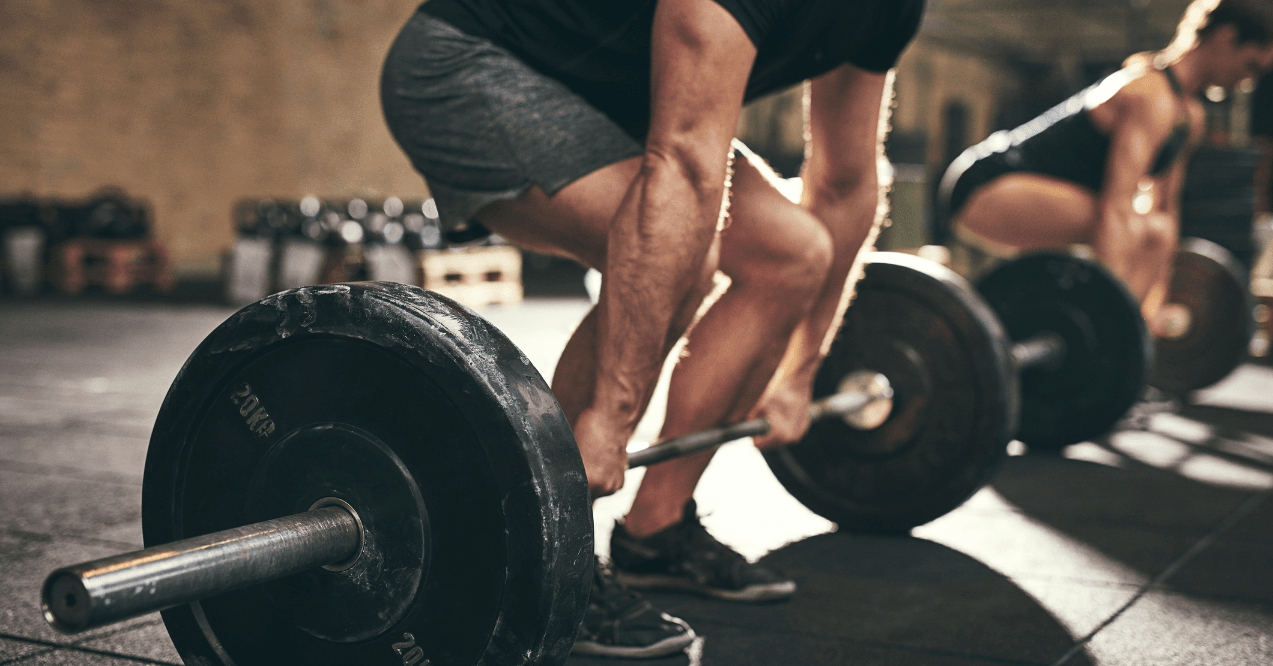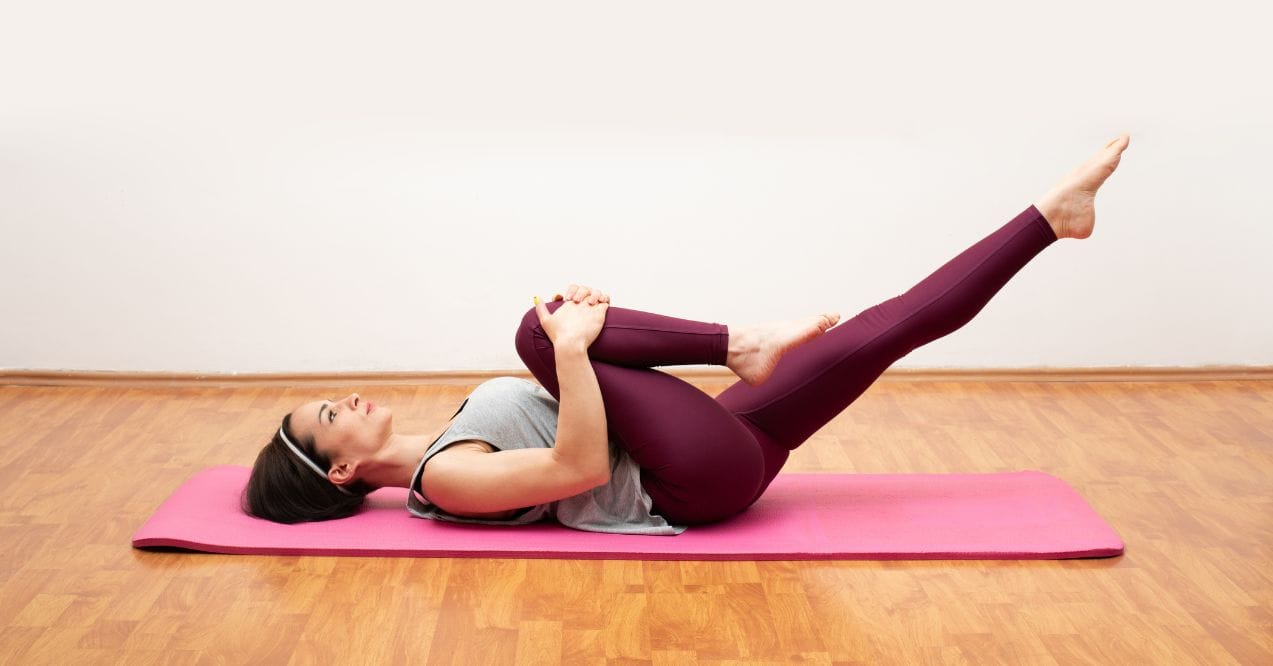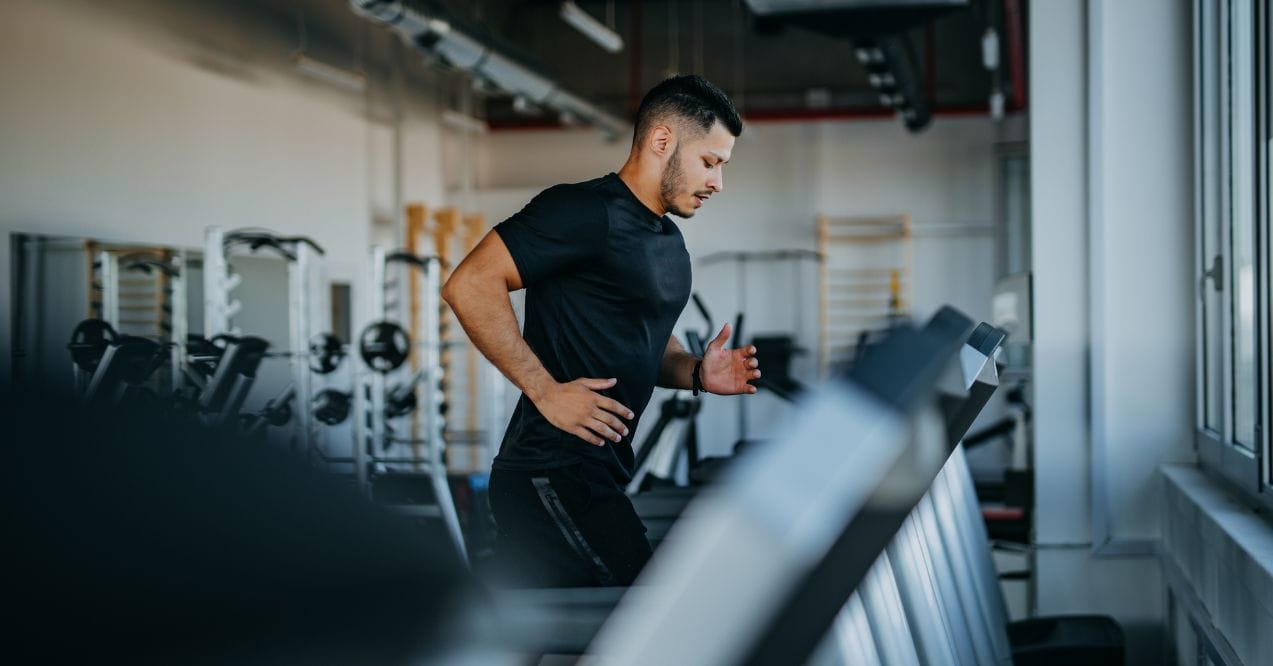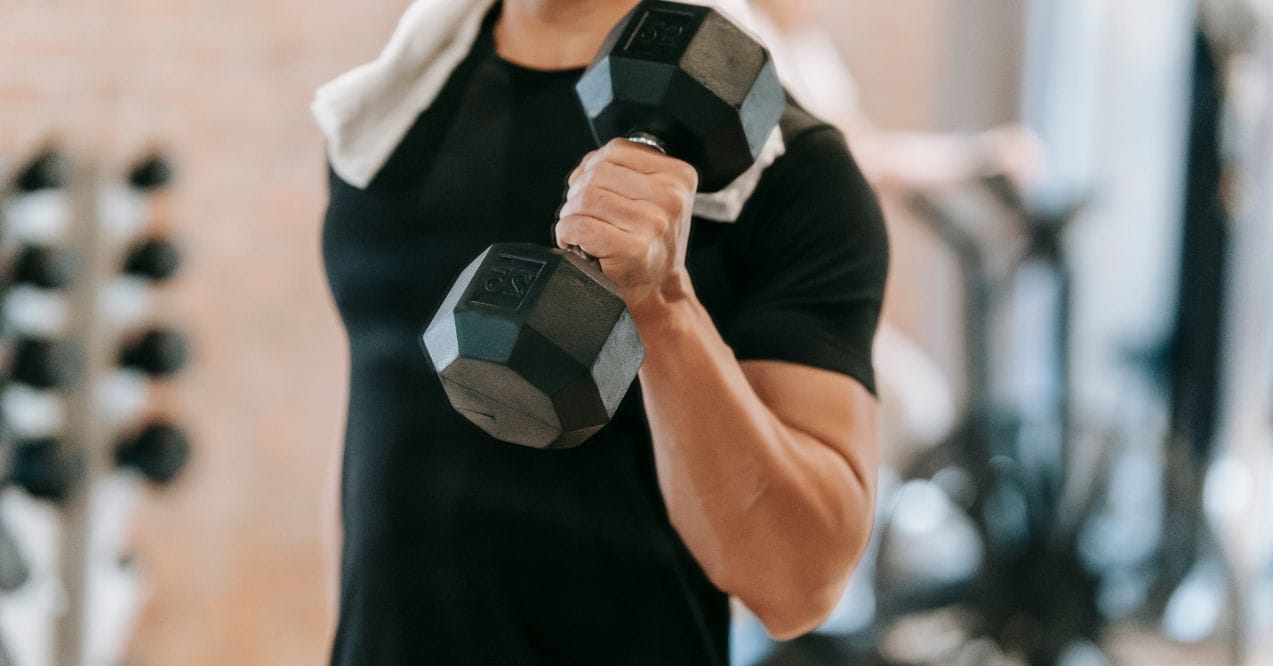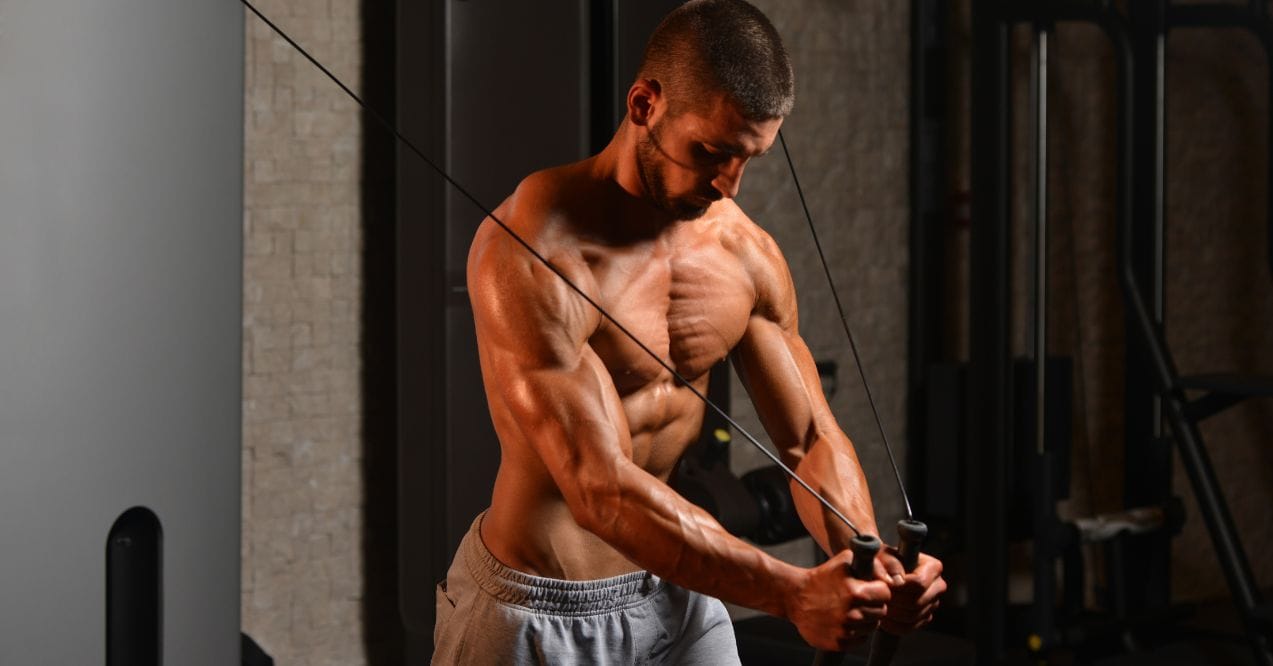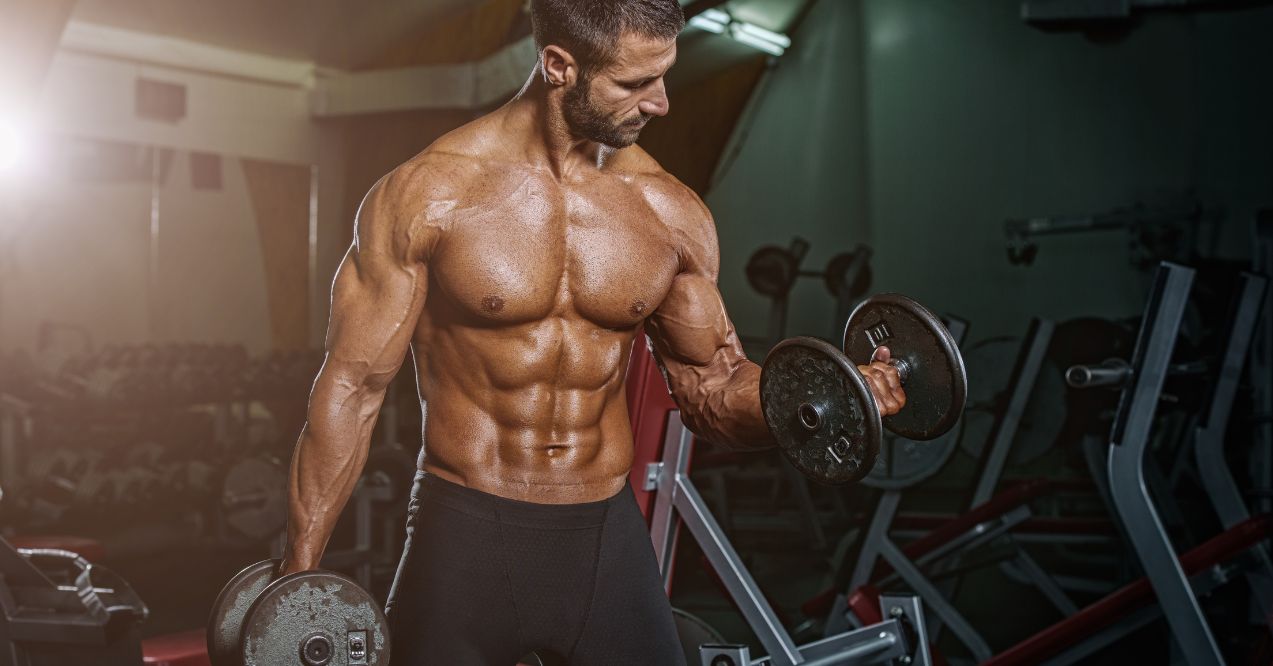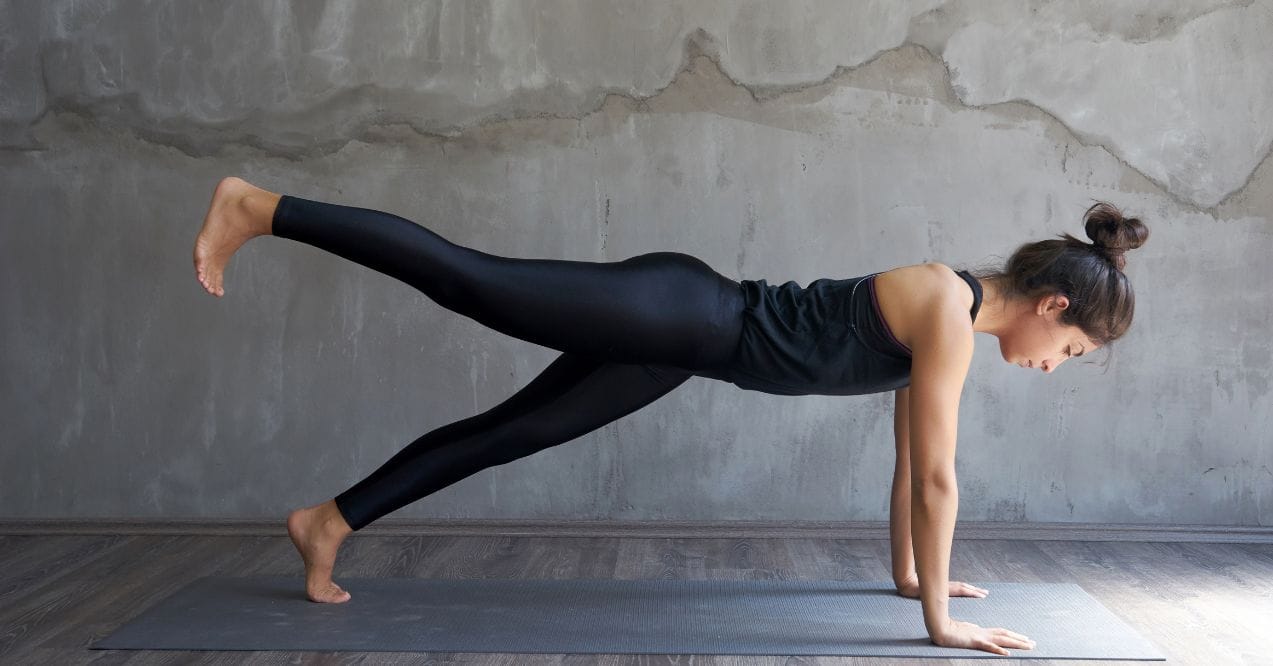Want a Stronger Core? Try This Beginner Core Workout Today
Looking to build strength from the inside out? A beginner core workout might be exactly what you need. Your core is more than just your abs – it’s the foundation of nearly every movement you make. Whether you’re picking up groceries, playing with your kids, or training for your first 5K, a strong core supports your daily activities and athletic goals.
In this guide, we’ll walk through essential exercises for beginners, a straightforward workout plan, and key techniques to ensure you’re training safely and effectively. No complicated equipment needed – just your body and a commitment to feeling stronger.
Why are core workouts essential for beginners?
Core strength forms the foundation of physical fitness, making a beginner core workout particularly valuable when you’re starting your fitness journey. Unlike isolated muscle training, core exercises engage multiple muscle groups simultaneously, creating a sturdy center that supports virtually every movement you make.
A strong core directly contributes to:
- Better posture and alignment – When your core muscles are weak, your body compensates by slouching or leaning, creating strain on your back and neck. Regular core workouts for beginners help maintain proper alignment throughout the day.
- Enhanced stability and balance – Your core acts as an internal stabilizer. Strengthening these muscles improves your balance during both everyday activities and more challenging fitness pursuits.
- Increased functional strength – Core strength translates to real-world capabilities – from carrying groceries to playing with children – making daily tasks easier and more comfortable.
- Reduced risk of back discomfort – A properly trained core supports your spine and can alleviate pressure on your back during physical activities.
- Improved athletic performance – Whether you’re following a 5 day hybrid training program for beginners or simply enjoying recreational sports, core strength enhances your ability to generate power and maintain control during movement.
The beauty of core training for beginners lies in its accessibility. These exercises typically require little to no equipment and can be modified to accommodate different fitness levels. Starting with foundational core work establishes proper movement patterns that will serve you throughout your fitness journey, preventing compensatory movements that could lead to discomfort down the road.
What Muscles Do Core Exercises Work?
Understanding which muscles you’re targeting during a core strengthening exercise for beginners helps you appreciate why these movements are so effective. Your core is a complex system of muscles that work together to stabilize your spine and pelvis while facilitating movement throughout your entire body.
The main muscle groups in your core include:
- Rectus Abdominis – Often called the “six-pack” muscles, these run vertically along the front of your abdomen. They’re responsible for flexing your spine forward, like during crunches or sit-ups. During a time under tension workout, these muscles create that familiar “burn” when held in a contracted position.
- Obliques (Internal and External) – Located on the sides of your torso, these muscles rotate and bend your trunk. The external obliques run diagonally downward from your ribs, while the internal obliques run underneath them in the opposite direction. Together, they create a supportive “corset” around your midsection.
- Transverse Abdominis – This is your deepest abdominal muscle, wrapping horizontally around your spine and organs like a natural weight belt. It activates during breathing exercises and when you “draw in” your navel toward your spine. This muscle is crucial for spinal stability but often overlooked in traditional workouts.
- Erector Spinae – Running along your spine, these back muscles help you maintain proper posture and extend your torso. They balance the work of your abdominal muscles and are essential for back health.
- Multifidus – These small but powerful muscles connect between vertebrae and provide crucial spinal support during movement.
- Diaphragm and Pelvic Floor – These muscles form the “ceiling” and “floor” of your core cylinder and play vital roles in breathing, stability, and internal pressure management.
Beginner Core Workout Routine
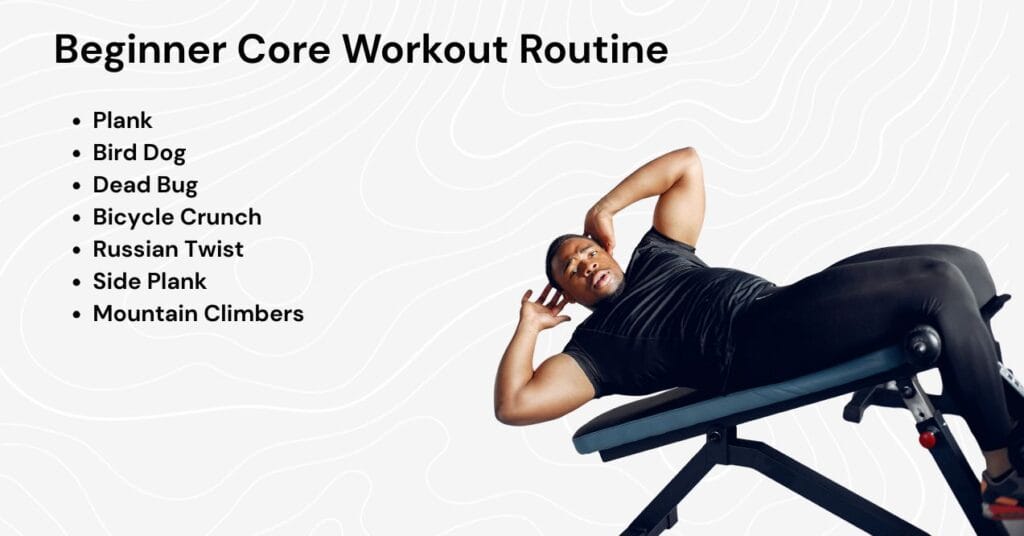
This balanced core workout at the gym for beginners incorporates effective abs exercises gym enthusiasts recommend and targets all the major muscle groups in your midsection. Perform this routine 2-3 times per week with at least one rest day between sessions. Start with 2 sets of each exercise and gradually progress to 3 sets as your strength improves.
1. Plank
The plank is a foundational core strengthening exercise for beginners that builds overall stability.
- Starting Position – Place forearms on the floor with elbows under shoulders and feet hip-width apart.
- Movement – Lift your body, creating a straight line from head to heels.
- Duration – Hold for 20 seconds, rest 40 seconds
- Sets – 2-3
Pro Tip: Keep your neck neutral by gazing at a spot on the floor just ahead of your hands.
2. Bird Dog
This exercise enhances coordination while working your deep core stability exercises beginners often neglect.
- Starting Position – Start on hands and knees with wrists under shoulders and knees under hips.
- Movement – Simultaneously extend your right arm forward and left leg back, maintaining a flat back.
- Reps – 8-10 per side
- Rest – 30 seconds between sets
- Sets – 2-3
Pro Tip: Avoid raising your limbs higher than your torso.
3. Dead Bug
This exercise strengthens your deep core while protecting your lower back.
- Starting Position – Lie on your back with arms extended toward ceiling and knees bent at 90 degrees.
- Movement – Slowly lower right arm overhead and extend left leg forward without allowing your lower back to arch.
- Reps – 8-10 per side
- Rest – 30 seconds between sets
- Sets – 2-3
Pro Tip: Exhale as you extend, keeping your lower back pressed into the floor.
4. Bicycle Crunch
This dynamic movement targets your obliques and rectus abdominis.
- Starting Position – Lie on your back with hands behind head and knees bent.
- Movement – Bring opposite elbow to opposite knee while extending the other leg.
- Reps – 10-12 per side
- Rest – 45 seconds between sets
- Sets – 2-3
Pro Tip: Focus on rotation quality rather than speed.
5. Russian Twist
This seated rotation exercise strengthens your obliques.
- Starting Position – Sit with knees bent and feet flat, leaning back slightly.
- Movement – Rotate your torso to touch the floor on each side.
- Reps – 8-10 per side
- Rest – 30 seconds between sets
- Sets – 2-3
Pro Tip: Elevate feet slightly for increased challenge.
6. Side Plank
This variation works the lateral core muscles.
- Starting Position – Lie on your side with elbow under shoulder.
- Movement – Lift hips to create a straight line from head to feet.
- Duration – Hold for 15 seconds per side
- Rest – 30 seconds between sides
- Sets – 2-3
Pro Tip: Stack feet or place top foot forward for better stability.
7. Mountain Climbers
This exercise adds a cardiovascular element to your core workout at the gym for beginners.
- Starting Position – Start in a push-up position with arms straight.
- Movement – Alternately draw knees toward chest in a running motion.
- Reps – 10-12 per side
- Rest – 45 seconds between sets
- Sets – 2-3
To maximize efficiency in your beginner core workout, proper nutrition plays a crucial role in supporting muscle development and recovery. Bone Broth Protein powder offers an excellent post-workout option with 20 grams of clean, high-quality protein per serving. Its chocolate flavor makes it an enjoyable addition to your fitness routine, while the collagen, glycine, and amino acids support the core muscles you’re working to strengthen.
Unlike traditional protein supplements, this bone broth formula promotes better digestion and optimal muscle repair – particularly beneficial when your abdominal muscles are adapting to new exercises. By combining protein with Trumeta Creatine, which delivers 5 grams of pure Creapure® creatine per serving, you could create a powerful nutritional strategy that supports your core training goals. The creatine helps maintain cellular energy during high-intensity movements like mountain climbers and Russian twists, while potentially enhancing your mental focus during challenging holds like planks and side planks.
Safety Tips for Core Workouts
Approaching core training with proper technique is just as important as the exercises themselves. Even when wondering can you build muscle in a calorie deficit, remember that quality movement always trumps quantity when it comes to core training.
Before starting any core workout, consider these safety guidelines:
- Warm up properly – Spend 5-10 minutes raising your body temperature with light cardio and dynamic stretching. This increases blood flow to muscles and prepares your body for more intense work.
- Maintain neutral spine position – Unless an exercise specifically calls for spinal flexion, keep your back in its natural curve to protect your vertebrae and discs.
- Breathe consistently – Avoid holding your breath during exercises. Generally, exhale during exertion (the hardest part of the movement) and inhale during the easier phase.
- Start with basic variations – Master fundamental movements before attempting advanced exercises. This builds proper movement patterns and prevents compensation injuries.
- Listen to your body’s signals – Distinguish between productive muscle fatigue and potential injury. Sharp pain, especially in joints or your lower back, is never normal.
- Progress gradually – Increase duration, repetitions, or resistance incrementally rather than making dramatic jumps that your body isn’t prepared to handle.
- Cool down effectively – Follow your workout with gentle stretches for your back, hips, and abdominals to promote recovery and maintain flexibility.
Conclusion
Building a stronger core doesn’t require complicated equipment or advanced fitness knowledge – just consistency and proper technique. This beginner core workout provides a solid foundation that you can build upon as your strength and stability improve. Remember that core training benefits extend far beyond aesthetics – you’re enhancing posture, protecting your back, and improving overall functional fitness.
Start with these accessible exercises, focus on form, and listen to your body’s signals. Within weeks, you’ll likely notice improvements in how you move, feel, and perform in both daily activities and other fitness pursuits. Your journey to a stronger core starts today.
Beginners should aim for 2-3 core workouts per week with at least one day of rest between sessions. This frequency allows adequate recovery while still providing enough stimulus for strength development and muscular adaptation.
Daily core training isn’t recommended for beginners. Your muscles need time to recover and strengthen between workouts. Instead, alternate between different intensities or target different core regions if you prefer more frequent training.
A beginner core workout should last 15-20 minutes, not including warm-up. Quality trumps quantity – focus on proper form during each exercise rather than extending your session with compromised technique.
Advertisement. This site offers health, wellness, fitness and nutritional information and is designed for educational purposes only. You should not rely on this information as a substitute for, nor does it replace, professional medical advice, diagnosis, or treatment. If you have any concerns or questions about your health, you should always consult with a physician or other health-care professional. Do not disregard, avoid or delay obtaining medical or health related advice from your health-care professional because of something you may have read on this site. The use of any information provided on this site is solely at your own risk.
